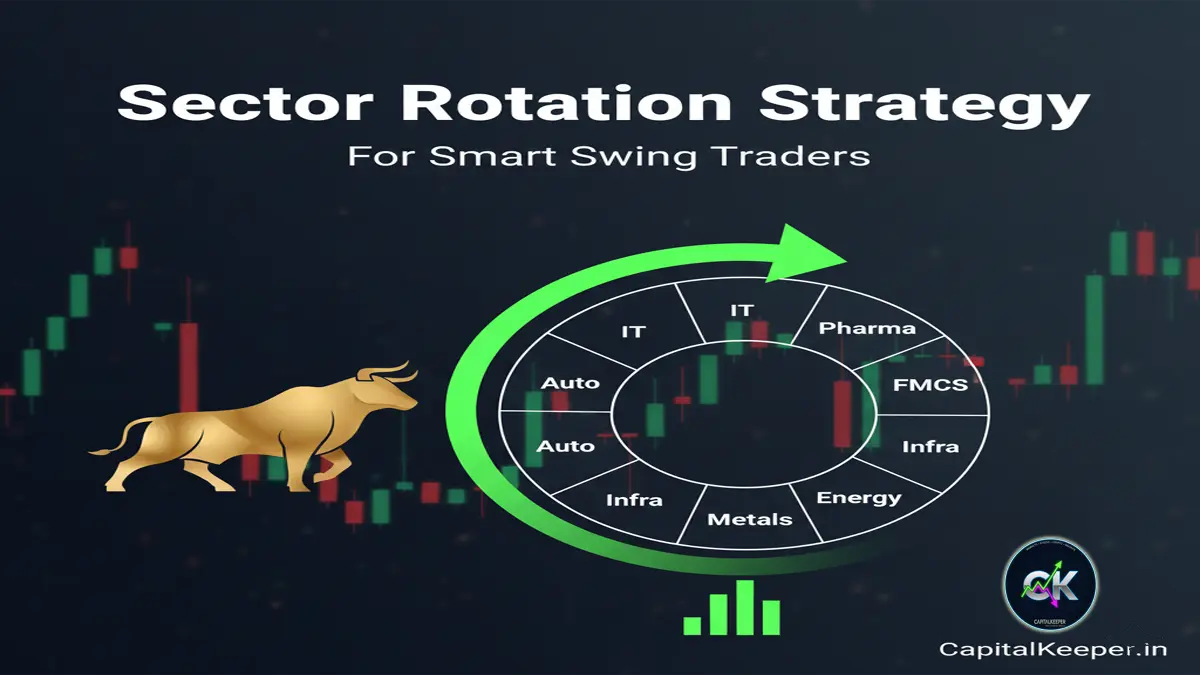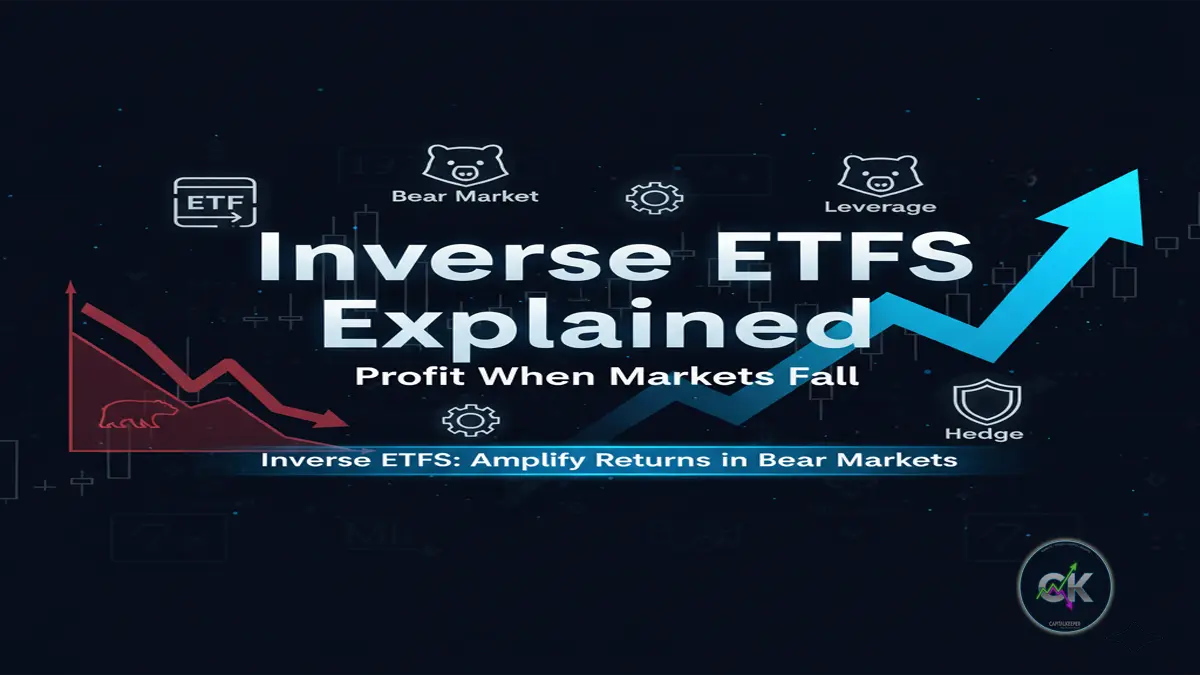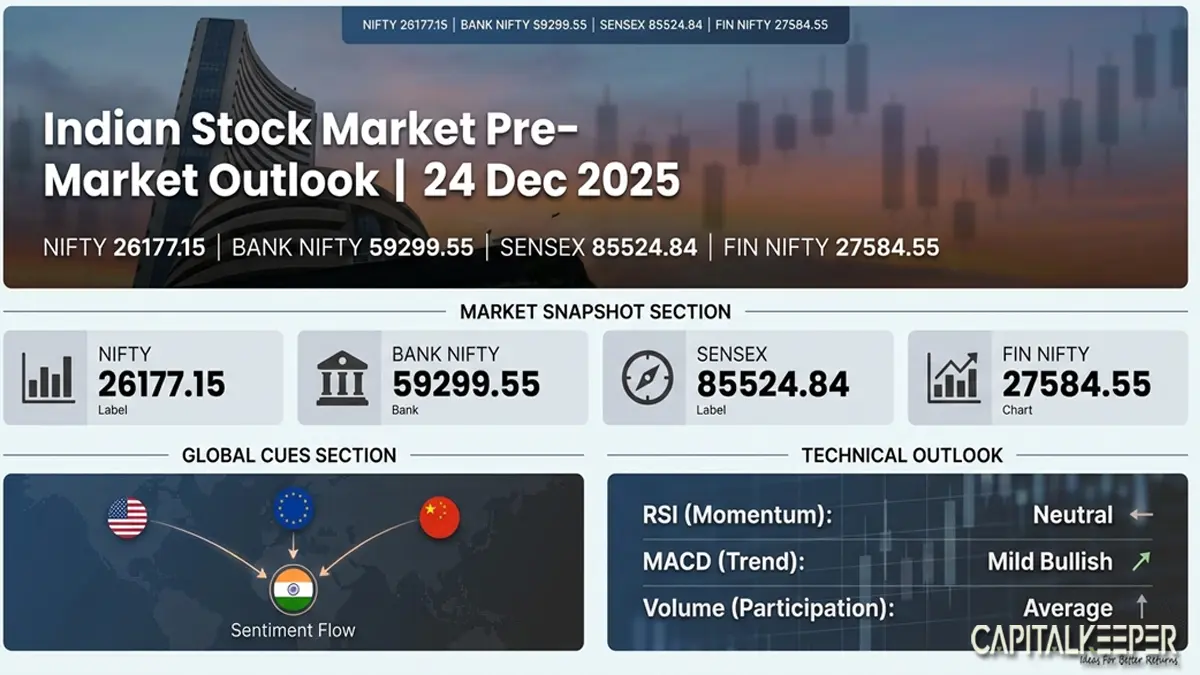Banking & Financial Sector Analysis: Bank Nifty, PSU vs Private Banks Explained
By CapitalKeeper |Sectoral & Thematic Trading Mastery | Indian Equities | Day – 2
Banking & Financial Sector: The Backbone of Indian Markets
The Banking & Financial sector is often called the heartbeat of the Indian stock market—and for good reason. Banking is not only the primary driver of liquidity in the economy but also a leading indicator for broader market sentiment. Traders and investors worldwide closely monitor Bank Nifty, a sectoral index that represents the largest and most liquid banking stocks in India.
In this blog, we will cover:
- Why Bank Nifty has such dominance in Indian markets.
- How PSU (Public Sector) banks differ from private banks in terms of technical and fundamental trends.
- How traders can combine sector analysis, technical indicators, and derivatives data to sharpen their setups.
🔹 Bank Nifty’s Dominance in Indian Markets
The Bank Nifty Index consists of the most liquid and capitalized banking stocks in India. Together, these banks represent more than 35% of Nifty 50’s total weightage, which makes the financial sector the single most influential driver of the benchmark index.
Key reasons for Bank Nifty’s dominance:
- Economic Linkage – Banks are the first to reflect changes in interest rates, credit growth, and monetary policy, making them the frontline of macroeconomic cycles.
- Liquidity Provider – Banks drive capital availability for businesses, industries, and consumers. Any slowdown or boom in lending directly impacts market confidence.
- High Trading Volume – Bank Nifty futures and options are among the most actively traded contracts in India, offering excellent liquidity and opportunities for intraday and positional traders.
- Rate Sensitivity – Since banking is directly linked to RBI’s repo rate decisions, rate cuts often spark rallies in banks, while hikes can weigh down the index.
📌 Observation: A bullish Bank Nifty often leads Nifty 50 upward, while weakness in financials can drag the market despite strength in other sectors.
🔹 PSU Banks vs Private Banks
The Indian banking space is divided into two pillars:
- PSU (Public Sector) Banks – State-owned giants like SBI, Bank of Baroda, PNB.
- Private Banks – Market-driven institutions like HDFC Bank, ICICI Bank, Axis Bank, Kotak.
1. Public Sector Banks (PSU)
Fundamentals:
- Strong backing from the Government of India.
- Historically suffered from NPA (Non-Performing Assets) issues but recent reforms and capital infusion have strengthened balance sheets.
- Heavily influenced by policy-driven lending (priority sector loans, rural initiatives).
Technical Cues:
- PSU Bank index is more volatile than private banks.
- Tends to outperform in bull cycles, as government reforms and recapitalization announcements trigger strong rallies.
- Attracts traders during breakout phases since rallies are often steep but short-lived.
📊 Example: SBI is often seen as the bellwether stock of PSU banks. A breakout in SBI often signals broad PSU Bank index momentum.
2. Private Banks
Fundamentals:
- Strong retail franchise, digital banking, and loan diversification.
- Better asset quality and higher profitability ratios compared to PSU banks.
- More consistent in delivering shareholder returns, making them long-term investor favorites.
Technical Cues:
- Private banks provide stability and trend sustainability.
- They tend to lead Bank Nifty’s long-term direction, especially HDFC Bank and ICICI Bank.
- Stocks like Kotak Bank and Axis Bank show cleaner chart patterns, making them ideal for swing trades.
📊 Example: HDFC Bank has the highest weight in Bank Nifty, so its price action often dictates overall index movement.
🔹 Technical + Fundamental Trading Approach
A smart trader doesn’t just pick one side—he learns to combine both PSU and private banks for different strategies.
🔸 1. Tracking Relative Strength
- Compare PSU Bank Index vs Private Bank Index.
- A rising PSU vs Private ratio = momentum play (good for traders).
- A rising Private vs PSU ratio = stability and long-term investment play.
🔸 2. Macro Cues to Watch
- RBI Policy Decisions (repo rate hikes/cuts).
- Credit Growth Data (YoY loan growth = bullish).
- NPA & Asset Quality (higher NPAs = bearish, improving NPAs = bullish).
- Bond Yields (rising yields often pressure banks due to higher borrowing costs).
🔸 3. Technical Setups in Bank Nifty
- Breakouts: Bank Nifty forms strong consolidation ranges before breakouts.
- Moving Averages: 20 & 50 EMA crossovers often act as good signals.
- Indicators: RSI > 60 and MACD crossovers usually align with trending moves.
🔹 Case Study: Bank Nifty Rally (Example Flow)
Imagine Bank Nifty is trading at 55,000 with the following setup:
- HDFC Bank is consolidating but showing RSI > 60.
- SBI has just broken out from a 6-month resistance.
- RBI announced a repo rate cut of 25 bps.
What happens?
- Private banks (HDFC, ICICI) lead a steady rally.
- PSU banks (SBI, PNB) witness sharp short-term surges.
- Bank Nifty as a whole sees explosive moves due to combined sector participation.
This setup allows traders to:
- Go long on Bank Nifty futures/options.
- Use hedged spreads (like bull call spread) to manage risk.
- Book partial profits in PSU names and hold private banks longer.
🔹 Checklist for Traders
✅ Always track Bank Nifty futures + options OI data (PCR, OI build-up).
✅ Watch macro triggers – RBI policy, inflation, global interest rate cues.
✅ Focus on SBI (PSU leader) + HDFC Bank (private leader) for early signals.
✅ PSU banks = momentum trades, private banks = trend trades.
✅ Use hedged strategies (like spreads) instead of naked longs due to volatility.
📌 Conclusion
The Banking & Financial sector is the foundation of the Indian stock market, and its movements often dictate the broader market trend. By understanding the nuances of PSU vs private banks, combining technical and fundamental cues, and watching derivatives data, traders can get a decisive edge in their setups.
For beginners, start with Bank Nifty analysis, track leaders like SBI and HDFC Bank, and gradually build an eye for sector rotation. For professionals, sector spread strategies (PSU vs private banks) can unlock deeper opportunities.
In essence master the banks, and you master the markets.
📌 For daily trade setups, technical learning, and smart investing tips, stay tuned to CapitalKeeper.in
📌 For more real-time updates, trade setups, and investment insights — follow us on [Telegram] and [WhatsApp Channel] subscribe to our newsletter!

Subscribe Now , Join Telegram the Crypto Capital Club, Get Free Crypto Updates
📌 Disclaimer
The content provided on CapitalKeeper.in is for informational and educational purposes only and does not constitute investment, trading, or financial advice. While we strive to present accurate and up-to-date market data and analysis, we make no warranties or representations regarding the completeness, reliability, or accuracy of the information.
Stock market investments are subject to market risks, and readers/investors are advised to conduct their own due diligence or consult a SEBI-registered financial advisor before making any investment decisions. CapitalKeeper and its authors are not liable for any loss or damage, direct or indirect, arising from the use of this information.
All views and opinions expressed are personal and do not reflect the official policy or position of any agency or organization. Past performance is not indicative of future results.By using this website, you agree to the terms of this disclaimer.
Ranjit Sahoo
Founder & Chief Editor – CapitalKeeper.in
Ranjit Sahoo is the visionary behind CapitalKeeper.in, a leading platform for real-time market insights, technical analysis, and investment strategies. With a strong focus on Nifty, Bank Nifty, sector trends, and commodities, she delivers in-depth research that helps traders and investors make informed decisions.
Passionate about financial literacy, Ranjit blends technical precision with market storytelling, ensuring even complex concepts are accessible to readers of all levels. Her work covers pre-market analysis, intraday strategies, thematic investing, and long-term portfolio trends.
When he’s not decoding charts, Ranjit enjoys exploring coastal getaways and keeping an eye on emerging business themes.
📌 Follow Ranjit on:
LinkedIn | Twitter/X | Instagram | ✉️ contact@capitalkeeper.in
















Leave a Reply